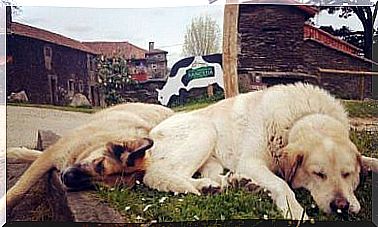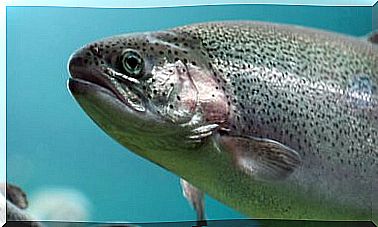5 South American Wildlife Reserves
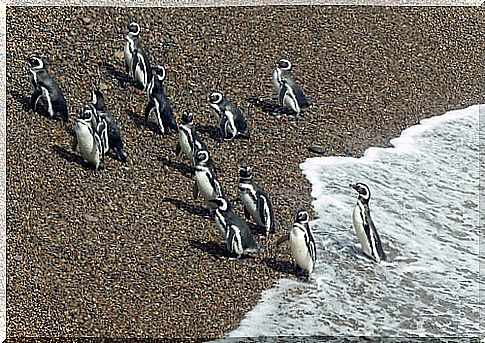
It never hurts to remember that humans are a great predator capable of destroying the planet they inhabit. That is why we must not forget the efforts made to preserve ecosystems with their animal and plant species. Today we tell you about some South American wildlife reserves.
Get to know five South American wildlife reserves
Everything seems to indicate that, although late, awareness to preserve the natural wealth of this world is increasing. That is why the increasing number of parks, shelters and sanctuaries scattered around the planet is celebrated.
In the so-called new world there are good examples of this. Here we detail five interesting samples of South American fauna reserves.
Peninsula Valdés Integral Wildlife Reserve (Argentina)
Declared a World Heritage Site by Unesco, there are sea lions and elephants and a great variety of birds, distributed in some 360,000 hectares to the northeast of the Patagonian province of Chubut. In addition, it is a breeding place for southern right whales.

The reserve has different areas of interest. For instance:
- Isla de los Pájaros, with a good viewpoint to observe, among other winged species, gulls, terns, cormorants, penguins, oystercatchers and plovers.
- The Punta Norte elephant, the only continental settlement of these animals.
- The colony of elephants and sea lions of a hair of Punta Delgada.
- The settlement of birds and sea lions of a hair of Punta Pirámides.
- Caleta Valdés, with its islets populated by flamingos, Magellanic penguins, cormorants and other aquatic birds. There are also elephant seals.
- In the steppe zone of the peninsula there are herds of guanacos and flocks of ñandú petiso or choique.
-Central Amazon Conservation Complex (Brazil)
The most biodiverse country on the planet has countless nature reserves. One of them is the largest protected area in the Amazon basin, also declared a World Heritage Site. The place, of more than six million hectares, has the largest variety of electric fish on the planet.

The Central Amazon Conservation Complex is also home to endangered species. This is the case of the giant arapaima, the Amazon manatee (photo), the black caiman and two types of river dolphins.
-National Reserve of Andean fauna Eduardo Avaroa (Bolivia)
With 714,745 hectares of extension, and to the southwest of the Department of Potosí, there is another of the South American fauna reserves that we choose to highlight. At an average altitude of 4,000 meters above sea level, the place stands out for a series of lagoons populated by three species of flamingos (Andean, Chilean and James).
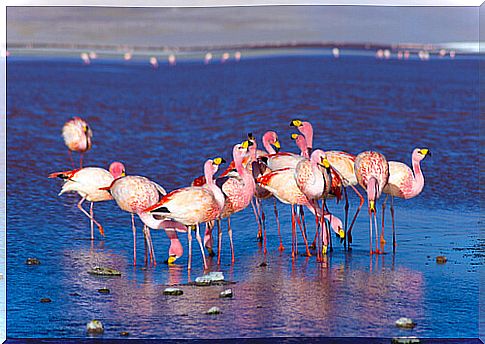
Other birds are also observed in the reserve, such as the horned soca and the suri. Among the mammals, the vicuña, the llama and the vizcacha stand out.
-Chimborazo Wildlife Production Reserve ( Ecuador )
It includes the moors that surround the Chimborazo volcano and covers 58,560 hectares 180 kilometers south of Quito. The reserve was designed mainly to carry out a South American Camelid Reintroduction Program. It should be noted that grazing with these animals preserves the original vegetation cover and protects the water resource.
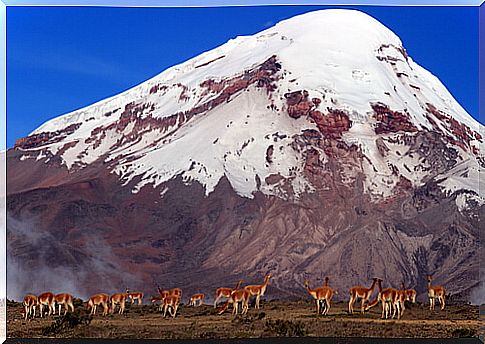
In addition to llamas, alpacas and vicuñas, in the place you can see specimens of páramo wolf, Andean weasel, páramo deer, skunk, páramo rabbit, marsupial and cutin frogs, guagsas, lizards and some 31 species of birds. Between them:
- Curiquingue
- Dirty
- Swift
- Condor
- Chimborazo hummingbird
- Moor ducks and gulls
- Andean Lapwing
- Large scholarships
-Anaro Sabanas Wildlife Reserve (Venezuela)
In the State of Barinas, to the west of the country, there is this reverse with fauna typical of areas of bank savannas, shoal and estuary.
Among the bird species, the gray heron and the chuzmita, the void bird, the greatcoat, the corocora, the aruco, the güiriri duck and the osprey stand out. For their part, the most representative mammals are:
- Báquiro white cheek and collar
- Picure
- Cachicamo
- Fox and crab fox
- Mapurite



